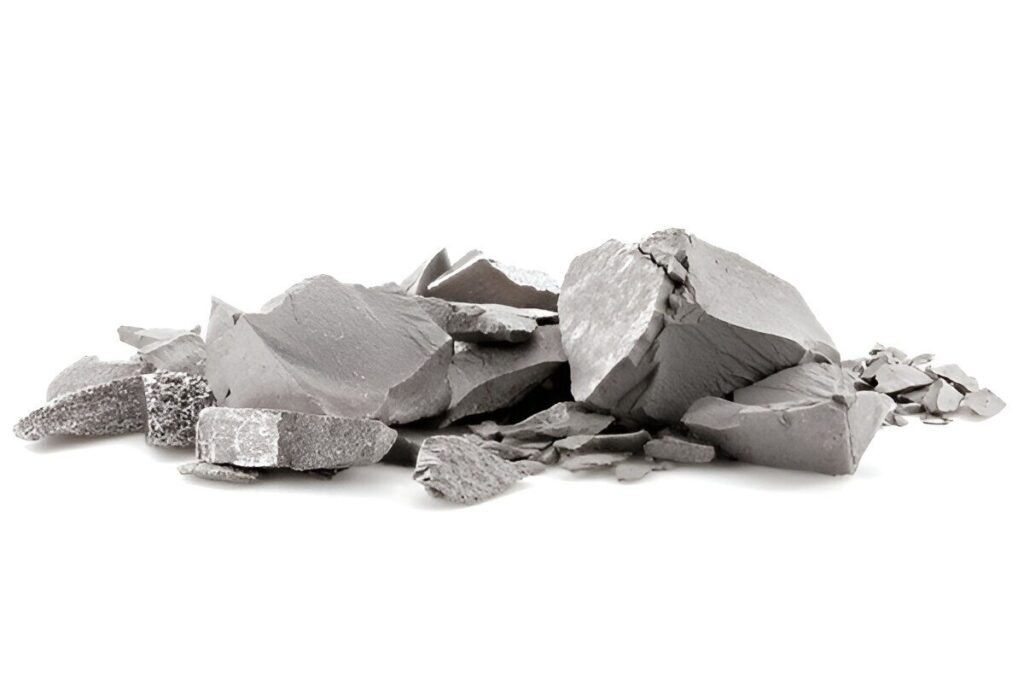If you’ve recently been purchasing carbide cutting tools, you most likely noticed that their prices have jumped, and others are seeing this as well. Globally, manufacturers face cost increases due to the limited supply of tungsten and tungsten alloys, which are essential for cutting tool production. In the machining industry, businesses are experiencing a negative impact on their profits due to rising fuel prices. In this text, we’ll show you why the price is rising, how it influences your company, and what you should do to keep running successfully. It’s time to look into what motivates the rise in your favorite cutting tools’ prices.
Significance of Tungsten Prices in the World

People might not hear much about tungsten, but in manufacturing and exact engineering, it’s one of the crucial and reliable materials. Due to its density and difficulty in machining, tungsten is commonly used in the production of carbide cutting tools, aerospace components, armaments, and other electronic devices. Since this material is resistant to high temperatures and pressures, it cannot be replaced where top performance is required.
China manages roughly 80% of the earth’s tungsten, so if anything unfolds in the sector, it can considerably sway the global market. For this reason, we’ve discovered that increases in environmental requirements and difficulties between countries have led to higher oil costs in recent years.
Because of the rise in tungsten and tungsten alloy prices, manufacturers end up raising the prices of carbide cutting tools as well. Since they are essential for the production of everything from aircraft parts to smartphones, shortages or surges in tungsten have a significant impact on the industry. Because of the issues, the supply chain across various buyers in different industries must rethink allocating strategies, add mtime, consider alternatives, and try using different materials, which is challenging if tungsten is a hard application, replacing most uses.
All things considered, changes in tungsten prices affect the world’s manufacturing performance. While it used to be only traders’ business, any industry using cutting tools in a competitive setup now needs to keep track of this market.
Current Tungsten Price Trends (2025 Update)
Early this year, tungsten prices jumped after pressure on the global supply chain increased. The APT, a tenfold expanded sector, has surged to $415 per metric ton unit (MTU). In addition, this represents a significant increase from 2023’s figure of $312/MTU and a further rise compared to 2024’s estimate of $375/MTU, demonstrating an ongoing upward trend with no apparent slowdown at present.
Because of this price rise, companies and their closely monitoring teams are watching the situation very closely. Most of the increase results from China’s move to tighten exports and from an increase in countries like the US and those in Europe buying more for their defense stocks. Due to tungsten’s role in defense, aerospace, and machining, a rise in its price is making an impact on other sectors that depend on carbide cutting tools and tungsten.
After that, we’ll go through the key reasons behind these price movements and why they are more important now than before.
Several Key Factors Influencing Tungsten Prices

Tungsten cost dictates world events, industry needs, and producer strategies. Carbide and tungsten sectors must understand these drivers.
- Military Applications and Strategic Demand
Missiles, heat-producing aerospace devices, armor, and armor-piercing shells need tungsten.NATO nations are re-establishing ties due to rising tensions, leading to increased defense spending, especially in Eastern Europe and the Indo-Pacific. This leads to greater demand for ammunition and equipment.
New military drones use more pure tungsten-based materials. In 2023, global defense spending is $2.44 trillion; tungsten plays a key role.
Industrial Demand from Key Sectors
Tungsten endures heat and wear. Aerospace, electronics, energy, and auto industries rely on tungsten-based materials for precision and strength in energy-intensive tasks.
The rise of electric vehicles leads to a high demand for automotive tires. There is a rise in the utilization of tungsten in EV battery connectors, charging stations, and components to reduce heat. Tungsten is also used in turbine blades and components that bear extreme pressure because it is very strong.
More automated CNC machines and tungsten carbide tooling with inserts can accelerate manufacturing. As industries seek more efficient and enduring tools, the global application of tungsten is rising.
China’s Dominant Role and Export Controls
More than 80% of the world’s tungsten comes from China, which also refines over 85% of what is mined. The major source of supply in China means the country has great influence in the world tungsten market. Tightened, China has tightened rules for exporting, including minerals such as tungsten. They are put in place to defend the nation’s resources and improve scrutiny over the use of these products in defense and technology. China tightened its rules against smuggling, thereby reducing the market’s supply in 2024.
Features that previously made Jiangxi and Hunan’s economies buoyant, such as the output of metals, are one effort to conserve, and attempts to save resources have slowed down. There is little alternative to China in the market, and it continues to react to prices, which keep reacting to Chinese policy moves.
Global Supply Chain Disruptions
Apart from manufacturing limits, problems in the supply chain have created extra challenges for tungsten supplies. Disputes in trade, changes in tariffs, and slight sanctions continue to hinder and block the normal movement of raw materials.
For instance, issues affecting global shipping and export delays in regulations led to tungsten powder deliveries and items being delayed. This year, we are still facing problems due to increased regional attention and heightened protectionism, with extra attention given to strategic mineral exports. In addition, a rising number of countries are updating their lists of minerals, resulting in extra complexity and more difficulty in control. Because tungsten transactions are progressing more slowly, companies importing and distributing tungsten are required to spend more resources.
Supply and Demand Imbalance
Additional elements are those that influence the main demand. The demand worldwide is primarily due to its consumption because it is consumed by the general public, as well as industry; however, the number of new sources is not increasing. Just a few tungsten mining projects on unprocessed land are being set up, mainly because of restrictions, delays in permits, and the high cost of investment.
On the other hand, reserves producing tungsten are going down, and at present, there is not enough recycled tungsten to satisfy the increasing needs across the globe. The International Tungsten Industry Association (ITIA) predicts that annual growth in global demand for tungsten will be 6–8% in the next few years, though the supply growth will stay limited to about 3–4%.
Such an imbalance led to an increase in manufacturers’ prices, which is a notable example, as the APT rose from $312/MTU in 2023 to over $ 41 /MTU by 2025, driven by a demand-supply imbalance.
Three Major Concerns of Overheating in the Tungsten Market

Rising prices of tungsten in 2025 have started to worry experts in the industry about the market’s stability. Although part of it is due to a lack of demand and not enough oil, some risks could make it less stable or could lead to a correction. Three major factors are likely to continue influencing tungsten markets shortly.
Supply-Demand Mismatch
The short supply of tungsten, caused by less mining activity and stricter export policies from China, has, to some extent, increased the prices of tungsten. At times, the rising prices in the housing market are sparked by speculation and what people expect to happen, rather than by real demand.
Global slowdown in the world, factors such as tariffs disrupt the current balance between supply and demand. In this situation, a sudden occurrence could happen if the company’s initial expectations are not met.
On the other hand, since China cuts back on its tungsten mining and export of main goods, other countries’ tungsten mines are becoming more active to meet the gap. Tungsten projects being developed outside China could lead to increased instability in the market and result in downward price movements as supplies enter the market in greater quantities. As it becomes costly for companies to use certain materials, alternatives that could place greater pressure on young people in the future are needed.
Policy-Driven Uncertainty
China’s stricter control over exports has influenced the increase in tungsten prices. These policies entail risks when it comes to strategy. Since many European and North American nations import a significant amount from a range of countries and stockpile reserves, they are attempting to diversify their supply sources.
Important mining companies based in the Western world are expanding, creating and developing new regions in distant lands like Africa, Central Asia, and South America. Such steps are made to lessen China’s grip on the market and reduce its global influence over world prices.
Although the recent announcement made during U.S.–China economic talks in Geneva brought some short-term relief, the main problems still exist. Looking at the bigger picture, the market shows that competition has increased, while the sources of tungsten are more dependent on, and less independent from, political factors.
Speculation and Market Instability
The third big issue is that more short-term capital and speculation are being seen in the tungsten mallowinghout China letting in much scrap and its lack of a tungsten futures market, finunablenvestors are not able to deal with risk or venture into long-term trades easimanythis reason, a lot of individuals are choosing quick trading based on unconfirmedevelopments political happenings.
Due to such actions, price spikes, price spikes in prices, buying behavior in panic, and shortages in their communities. Maintain it so that the market remains balanced for a long time. If the interest in speculative trading drops and profit-taking declines rapidly, creating uncertainty for buyers and those who buy these goods, there is no robust global system to invest in metals. Investors often base their decisions on emotions rather than solid data when trading the metal. Manufacturing industries that experience complications with punctual shipments will feel the effects as long as the setup does not improve.
Industry Adaptation and Future Costs
Rising prices of tungsten in 2025 have started to worry experts in the industry about the market’s stability. Although part of it is due to a lack of demand and not enough oil, some risks could make it less stable or could lead to a correction. Three major factors are likely to continue influencing tungsten markets shortly.
Business areas, primarily in aerospace, automotive, electronics, and developing, are coming up with addresses as they deal with the issues of uncertainty and maintaining supply. Many developers are working on new technologies to discover materials that can work as well as those they currently use, but at lower costs. Companies are beginning to use advanced ceramic materials to maintain the quality of their products as good as before.
At the same time, various industries are experimenting with technologies meant to recycle tungsten from scrap and used products. Following the beneficial circular route is good for alignment and also matches environmental goals. Businesses are now sourcing tungsten, particularly from countries in Africa, to reduce their vulnerability to these issues.
In this regard, to remain high, demand will likely stay high, given the current situation, as there is a shortage of supply and strong demand in the defense and high-tech sectors. This means, despite new mining projects, the lack of exceptional tulikelyinerals will probably keep prices above their long-term averages for a long time. Businesses should prepare for developing expenses and remain competitive to compete well in the market.
Conclusion
There are expected to be major price increases in the tungsten market in 2025 due to less supply, greater demand from the military and industry, and China’s new export rules. Some of the main problems impacting the market are surplus or shortage of products, unclear regulations, and large amounts of speculative trading. Due to these problems, they attempt to utilize various enhancing resources, rely on recycling, and depend on new companies for their supplies. For now, tungsten is projected to remain due to limited prices, primarily because of the few new mining opportunities and constant consumer demand. Dealing with this required situation calls for careful planning and innovative approaches, because defense and advanced manufacturing heavily rely on close observation and constant change.

